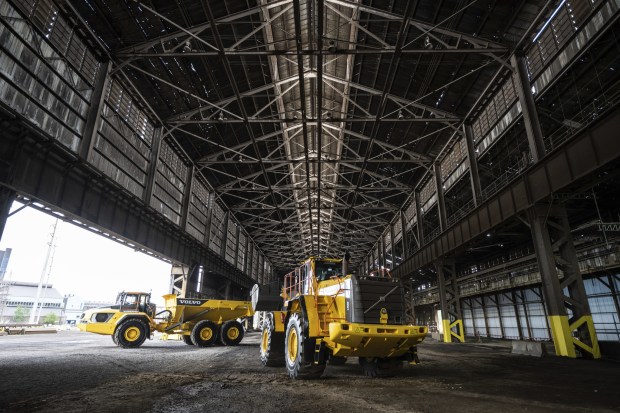U.S. Steel and a Texas company recently announced an innovative project to cut up to 50,000 tons a year of planet-warming carbon dioxide from U.S. Steel’s Gary Works plant.
“The project will be the first commercial-scale carbon capture utilization plant at a steel plant in North America,” a news release from the companies said.
Two environmentalists familiar with the Gary plant are skeptical about the project’s benefit, however.
CarbonFree Chemical Holdings, of San Antonio, plans to install its SkyCycle technology at Gary Works to capture carbon dioxide from the steel company’s blast furnaces, which turn iron ore into iron.
The SkyCycle process would turn blast furnace carbon dioxide emissions into calcium carbonate, which has a wide variety of industrial and chemical uses.
“U.S. Steel is setting a precedent for how manufacturers can and must proactively manage their carbon emissions,” CarbonFree CEO Martin Keighley said in the companies’ news release.
CarbonFree also operates a plant called SkyMine to capture carbon from a San Antonio cement factory.
The SkyCycle system at Gary Works could begin operating in 2026 with installation beginning this year. The agreement between the two companies has a 20-year term after the process comes into service.
“We want to know more about it,” said Dorreen Carey, president of Gary Advocates for Responsible Development. “What is their plan? We’d love to hear them make a presentation on what they’re going to do.”
She added: “If this is just a plan for continuing to use coal over time, that’s not really getting us to a point where they’re not using fossil fuels. U.S. Steel needs to upgrade and modernize their operations to reduce their carbon and other emissions.”
U.S. Steel’s Gary works emitted more than 10 million tons of carbon dioxide in 2022, by far the most in Indiana, according to U.S. Environmental Protection Agency data.
Construction vehicles sit at the site of the construction of a new pig iron caster at U.S. Steel Gary Works on Thursday, May 26, 2022. The mill is participating in a carbon capture project slated to begin in 2026. (Kyle Telechan for the Post-Tribune)
A 50,000-ton reduction in carbon dioxide emissions with SkyCycle would be about one-half of 1% of the total.
“We’re very skeptical of this project being able to meaningfully reduce the carbon impact of this steel mill,” said Ben Inskeep, program director of Indianapolis-based Citizens Action Coalition. “We’re really concerned this means that they’re sort of locking in decades of more pollution. Even if the technology works great and works according to plan, it’s not going to reduce the other types of pollution coming from this plant.”
He added that the U.S. Department of Energy recently announced multi-million-dollar grant awards for demonstration projects at industries, including $500 million projects at steel plants in Ohio, Mississippi and Iowa.
One was a hydrogen-ready direct reduced iron plant and an electric melting furnace at a plant in Middletown, Ohio, owned by Cleveland-Cliffs, which also has plants in Porter and Lake counties.
“We were disappointed to see those big awards going to other states,” Inskeep said.
Tim Zorn is a freelance reporter for the Post-Tribune.





